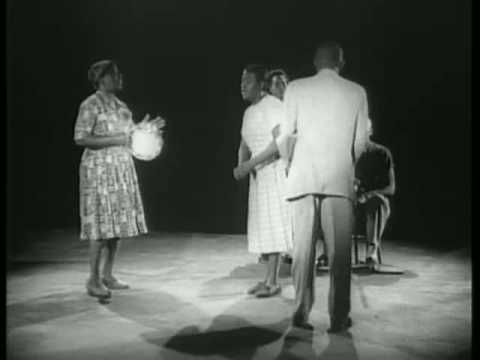‘Ring shout’ was a common dance of Black American plantation slaves. It included moving around in a circle in a counterclockwise direction, chanting, handclapping, or praying in the process (“African American Spirituals.”). Other elements of ‘Ring shout’ were calls, cries, and rhythm. The dance is believed to be a form of Christian worship unique to the Black slaves (‘Home’). ‘Ring shout’ is the progenitor of the African-American spirituals, as well as the latter Black music styles such as blues or jazz.

Many of the songs created by Blacks were sung in the field or in churches. They were usually passed from parents to their children using oral means to do it. These spirituals are known to this day as Harry T. Burleigh published his arrangements of them (Bell 9). One of the first African-American composers, Burleigh gathered information on fifty spirituals, lecturing about them across the United States (Bell 10). Part of this culture himself, he wanted the spirituals to be performed with understanding.
Yet ‘Ring shout’ did not only influence Black musicians; in its contemporary times, white artists had a tendency to portray Black minstrels by using blackface. There are different opinions on why it happened. For example, according to Norris, a certain point of view suggests that this minstrelsy took place because of intercultural observation between Blacks and Whites (Norris 503). According to a different opinion, the reason for this minstrelsy’s existence was the white artists’ racist intention to negatively portray African-Americans and support their status as slaves (Norris 502). These two opinions do not contradict each other, as it is possible that white minstrels felt challenged by Blacks enough to adopt parts of their culture and, at the same time, attempt to discredit them.
Works Cited
“African American Spirituals.” The Library of Congress, Web.
Bell, Danna. “Link to the Library of Congress: Harry T. Burleigh—The Man Who Brought African-American Spirituals to the Classical Stage.” Music Educators Journal, vol. 104, no. 4, 2018, pp. 9–11. Crossref, Web.
Norris, Renee Lapp. “The Creolization of American Culture: William Sidney Mount and the Roots of Blackface Minstrelsy. By Christopher J. Smith. Urbana: University of Illinois Press, 2013. – Ring Shout, Wheel About: The Racial Politics of Music and Dance in North American Slavery. By Katrina Dyonne Thompson. Urbana: University of Illinois Press, 2014.” Journal of the Society for American Music, vol. 11, no. 4, 2017, pp. 502–07. Crossref, Web.
“Home.” Santa Barbara Ringshout Project, www.ringshout.org.